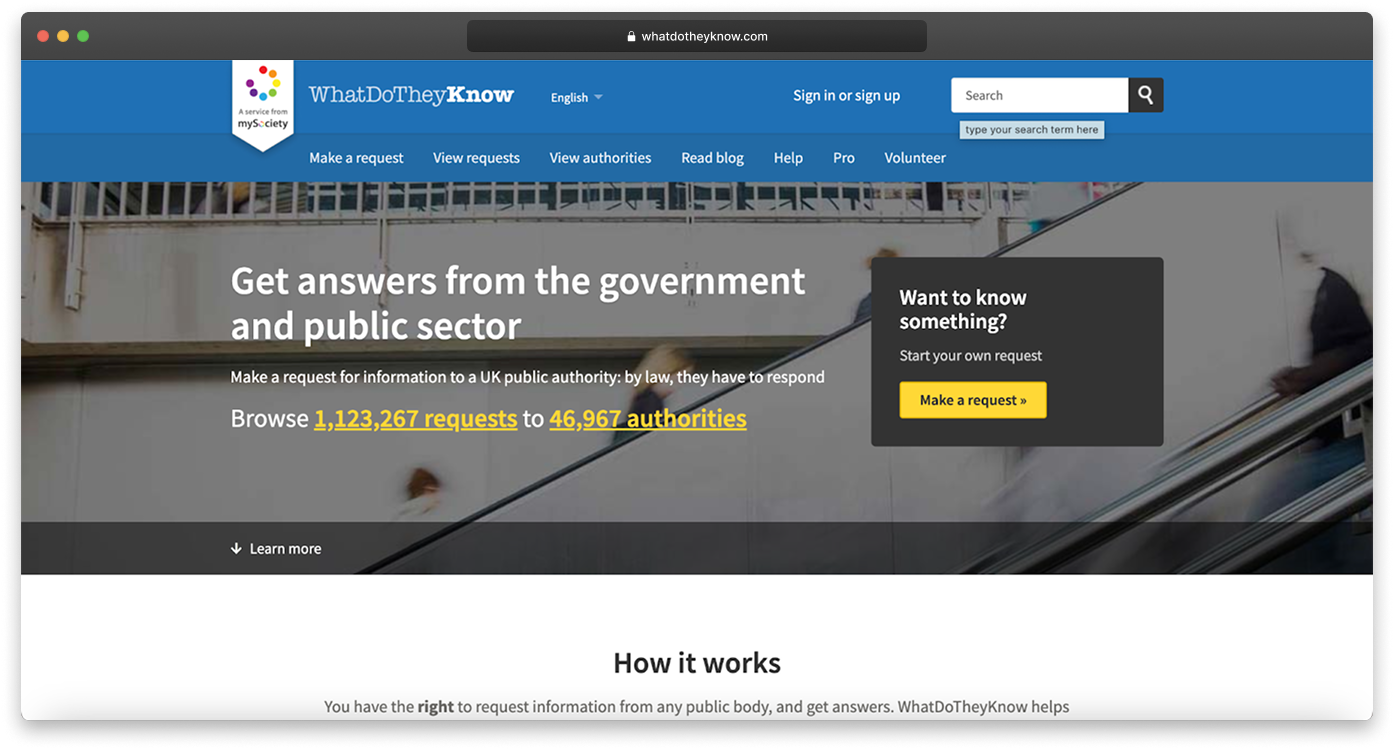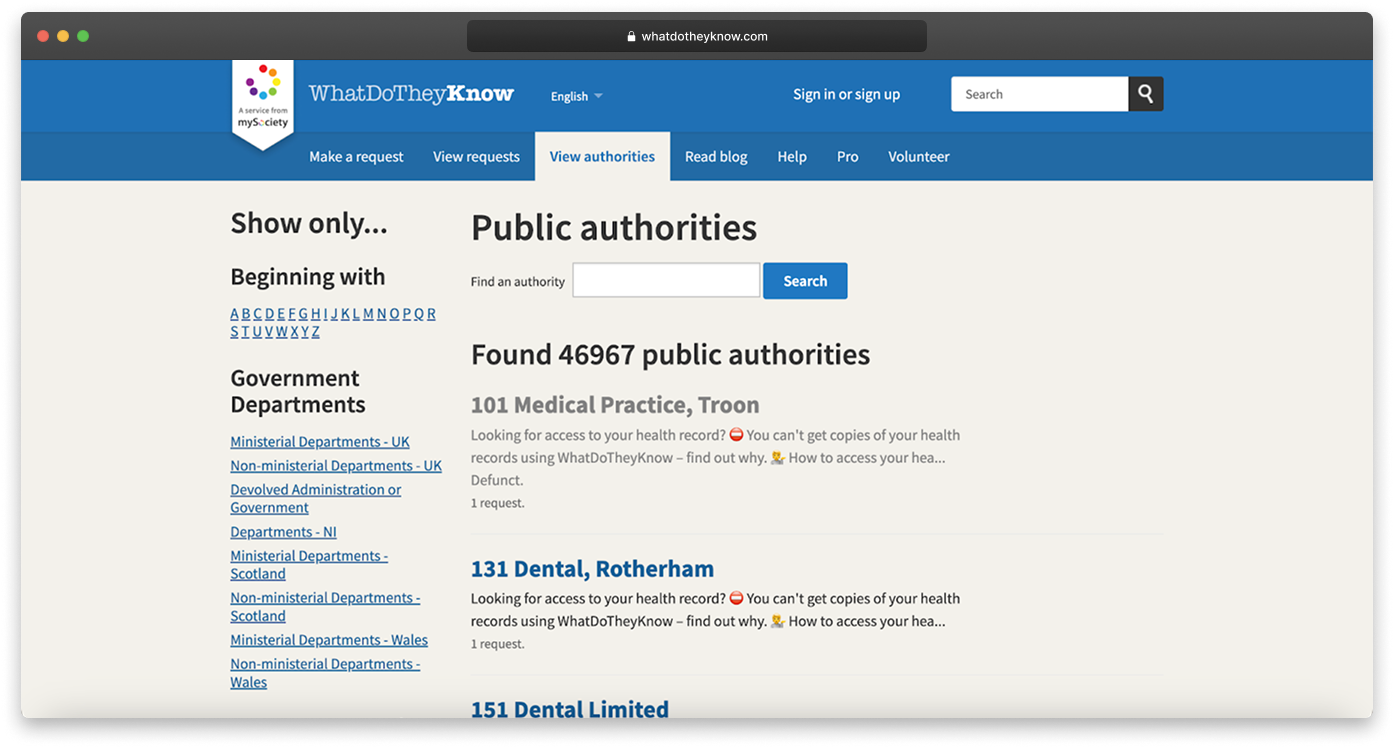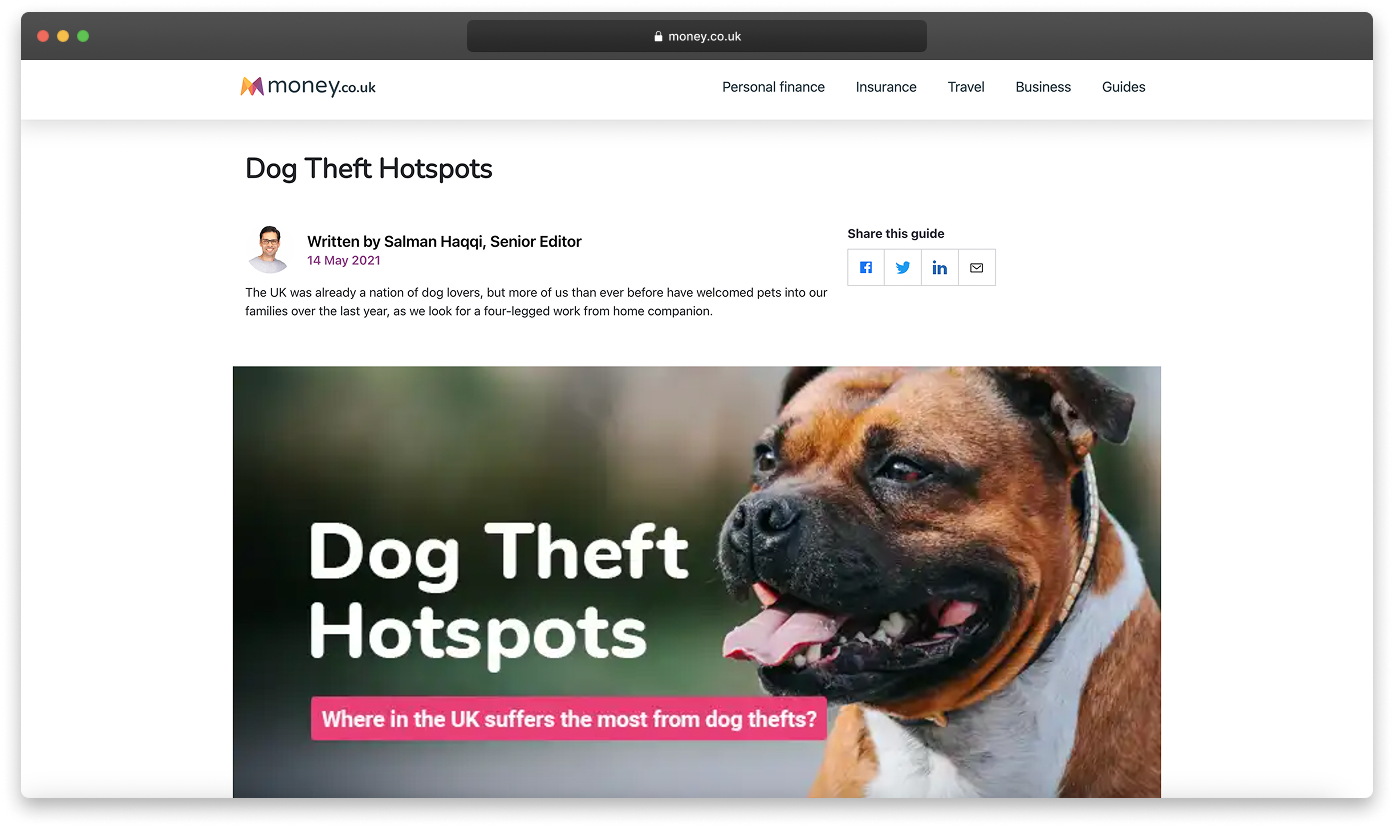
One of the biggest challenges in digital PR is finding new, engaging, and reliable data sources for campaigns.
However, one of the best data sources often goes unused; either because people aren’t aware of it or don’t know how to use it effectively.
I’m talking about Freedom of Information (FOI) requests.
These can be an incredible way to obtain unique, free data that you can use to uncover fresh insights and create standout stories, but they can be daunting if you’ve never submitted one before.
Keep reading to learn how to use FOI requests as a digital PR campaign data source. You’ll learn what they are, why they’re so powerful to build stories from, who you can make requests to and how to go about submitting them.
I’ll also let you in on a massive time-saver you can use when making requests to lots of different places at once; a cheap and powerful tool that lets you bulk-submit and manage them all centrally.
What are FOI Requests?
FOI requests are formal inquiries made to public bodies, requiring them to disclose certain information they hold.
In the UK, the Freedom of Information Act 2000 gives individuals and organisations the right to access information from government departments, local councils, NHS trusts, police forces, and more.
These requests can reveal untapped data that we can use to form digital PR campaigns.
I’m going to focus on UK FOI requests in this guide, but these can also be submitted to public bodies in the USA, the EU, Canada and other countries and regions.
Why use FOI requests in digital PR?
Exclusive data
FOI requests give you access to unique data that isn’t available anywhere else, making your campaign stand out and giving it an edge. Whether it’s crime statistics, healthcare trends, or council spending, this exclusive information can give your campaign authority and exclusivity.
Value to journalists
Journalists receive a lot of requests to cover campaigns, so to catch their eye, you need to offer fresh angles and robust data. The insights you can get from FOI requests are highly newsworthy, making your campaign more likely to secure links in top-tier publications.
Authoritative
Using data from an authoritative source, such as a public body, gives your campaign extra credibility. This can increase trust, not just with journalists but also with your client’s target audience.
Evergreen potential
This depends on your specific request, but FOI data can have long-term relevance, allowing campaigns to gain traction over time. This means it can also be repitched with seasonal angles or hooked into relevant news stories that crop up further down the line.
Where Can You Send FOI Requests?
FOI requests can be sent to many public bodies, many of which you might not have realised. You can see a complete list of UK organisations here, but here are some of the most common ones:
Local Councils
Local authorities are a goldmine for data on all kinds of different things, including:
- Blue Badge misuse
- Council spending
- Parking fines
- Some forms of lower-level crime
NHS Trusts
Perfect for campaigns for health and wellbeing clients, NHS Trusts can provide data on:
- Waiting times for treatments
- Hospital admissions by condition
- Staff shortages
Police forces
Region police forces can share data on the following:
- Crime rates
- Seasonal spikes in specific offences
Government Departments
For data at a national level, you can go to government departments, which hold broader datasets, including:
- Education statistics from the Department for Education
- Employment trends from the Department for Work and Pensions
- Road safety data from the Department for Transport
Environmental Agencies
If you’re working on a campaign related to nature or the climate, environmental bodies can provide:
- Air and water quality reports
- Wildlife populations and protection efforts
- Flood risks and prevention data
Public transport operators
Transport bodies can provide information on the following:
- Train delays
- Passenger numbers by route
- Public complaints
Educational institutions
Schools and universities can reveal trends such as:
- Attendance rates
- Course popularity
- Student satisfaction levels
How do I send an FOI request?
There are multiple ways that you can request information, including:
- Letter
- Social media
- Fax
- Some authorities may have an online form
However, the easiest way is through a platform called WhatDoTheyKnow. In addition to sending your request to the relevant person, WhatDoTheyKnow allows you to browse thousands of requests made by other people (and their responses).
With a premium account, you can unlock extra features like sending batch requests, making the process significantly easier. Here’s a step-by-step guide on how to send a request:
Step 1: Visit WhatDoTheyKnow.com
Navigate to WhatDoTheyKnow, a platform that simplifies the FOI process by allowing you to send requests to UK public bodies and track the responses.

Step 2: Create an Account
Click Sign in or sign up in the top-right corner and create an account. Make sure you use your real name, which is a legal requirement.

Step 3: Find the Relevant Public Body
Use the homepage search bar or the Public Authorities page to find the organisation you want to contact. For example, if you’re looking for NHS data, search for the relevant NHS Trust or body.

Step 4: Write Your FOI Request
Once you’ve found the correct public body, click make a Freedom of Information request to this authority. Fill in the request form with your specific query. Be clear and concise to improve your chances of getting the needed data.

Step 5: Submit the Request
After reviewing your query, preview the request, make sure everything looks ok, and click Send Request. WhatDoTheyKnow will send the request on your behalf and let you know when a response is received.
Step 6: Monitor Responses
Log in to your account regularly to check for updates. Public bodies have up to 20 working days to respond, but they may need to ask for clarification before they do. Once you receive a response, you can download or view the data directly on the platform.
How to use FOI requests effectively
Identify the Right Public Bodies
Before drafting your FOI, research which organisations will likely hold the information you need. You can use WhatDoTheyKnow to see if there are any similar requests to yours, who they were sent to, and whether or not they held the information. For example, if you want to know the number of potholes in a particular area, this would be handled by the local council instead of the Department for Transport.
Craft a Clear and Concise Request
The most important thing is to be very specific in your request. Authorities often ask for clarification on requests, even for things you might consider self-explanatory. For this reason, it’s always better to overexplain things when making a request. Again, it’s best to check on WhatDoTheyKnow to see if there are any similar requests that you can base yours on. If they were unsuccessful, you can use this to tweak yours and increase your chances. Make sure to include relevant timeframes, locations, demographics, or definitions.
Example
1. The total number of car thefts reported within your police force area for the last five calendar years (2019, 2020, 2021, 2022, and 2023). I do not require information on all vehicle thefts, just passenger cars.
2. Please also split this data by the make and model of each stolen car and the colour of each car, where available.
Regarding car theft, I mean offences of taking a motor vehicle without consent under Section 12 of the Theft Act 1968 (outlined here: https://www.cps.gov.uk/legal-guidance/th…).
The example above clearly defines the timeframe required and how the data should be broken down. While “car theft” might seem straightforward, legal definitions can often be much more complex than they appear, with different authorities defining things differently. That’s why including a link explicitly showing what we’re referring to is one of the best ways to ensure success.
Plan Well in Advance
Public bodies have up to 20 working days to respond to FOI requests, which is roughly one working month. However, there can be additional delays, and you also need time to compile the data and write up your findings, so factor this into your campaign timeline to avoid last-minute delays.
Look for Potential Stories
Once you get your data, analyse it for trends, outliers, and surprising findings. These elements form the backbone of a strong campaign narrative. Combine the data with visuals like infographics, charts, or interactive elements to enhance the appeal to journalists. For example, a heatmap showing regions with the most burglary reports could make your data more engaging.
Examples of Successful FOI Campaigns
Over the years, we’ve used FOI requests to uncover fascinating stories that gained widespread media coverage. Here are a few examples of how we’ve turned FOI data into impactful digital PR campaigns:
The Return of Victorian Diseases (NowPatient)

Using FOI data from NHS Trusts, we highlighted the resurgence of diseases like tuberculosis and scurvy in the UK – conditions often associated with the Victorian era. This generated national headlines in top-tier publications like the Express, sparking conversations around healthcare inequalities and public health.
Blue Badge Offences Across the UK (Uswitch)

Through FOI requests to local councils, we uncovered the staggering number of Blue Badge misuse offences nationwide. By ranking the worst-offending regions, we created regional and national stories that resonated with audiences and received coverage in publications like This is Money.
Dog Theft Hotspots (money.co.uk)

By requesting data from police forces across the UK, we revealed the scale of dog theft crimes and the areas where owners should be especially vigilant. This campaign struck an emotional chord, tapping into the public’s love for their pets, covered in publications like the Express.
Common FOI Challenges and How to Overcome Them
While FOI requests are a powerful tool for digital PR campaigns, they’re not without challenges. Here are some common hurdles you might encounter and practical tips to navigate them:
Ambiguous or Vague Responses
Public bodies may provide incomplete or unclear data that doesn’t directly answer your query. For example, they might not be clear about precisely what the data covers.
- Your initial request should be as specific as possible (e.g., include timeframes, categories, and formats).
- If the response is unclear, you can request clarification or additional details. Authorities are required to assist with reasonable follow-ups.
Refusals or Exemptions
Some requests can be refused if the data is deemed exempt under the Freedom of Information Act (e.g., personal data) or if retrieving it would take too long and take the request above the cost limit.
- Research similar requests beforehand to avoid requesting information that can’t be shared.
- If cost is the issue, narrow your request (e.g., reduce the timeframe or focus on a specific dataset).
- You can appeal the decision if you believe the refusal is unjustified.
Slow Responses
Public bodies have 20 working days to respond, but delays can occur, especially for complex requests.
- Factor in response times when planning your campaign timeline. If possible, prepare them toward the end of the client’s quarter.
- Send requests well in advance of your campaign deadline.
- Politely follow up if the deadline is missed.
Data Overload
Some FOI responses include vast amounts of data that can be difficult to understand and analyse, especially if they’re provided in unstructured formats like scanned PDFs.
- Request data as an Excel or CSV file when submitting your FOI.
- Use Excel or Google Sheets to clean and analyse large datasets.
- Look out for key trends or outliers that you can use to form a story.
Irrelevant Data
Sometimes, the data provided doesn’t support your intended angle or is less interesting than expected.
- Have a backup plan with alternative datasets or angles.
- Work with your team to brainstorm ways to reframe the data.
- Combine your FOI data with additional public data sources.
Discrepancies in Data Across Regions or Organisations
Public bodies may interpret your request differently or record their data differently, leading to inconsistencies.
- Before you send your request, do your research to ensure that the data will be comparable.
- Be as clear as possible about what you’re asking for. If you give the authorities a narrow definition of what you’re after, the responses are more likely to be comparable.
- If you do decide to present the data as it is, explain any potential discrepancies. You can potentially turn this into part of the story.
Incorporating FOI requests into your digital PR strategy can unlock a treasure trove of data-driven stories that resonate with journalists and audiences. With careful planning and a creative approach, FOI data can elevate an ordinary campaign to the next level, delivering results for your clients.
If you’re considering using FOI requests for your next campaign, we recommend sending one as a test run before promising anything to a client. This allows you to make any mistakes with less risk, and if the results look good, you can turn them into a campaign for a relevant client. Start small, do your research, and let the data do the talking!



